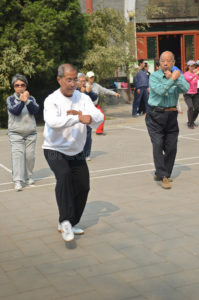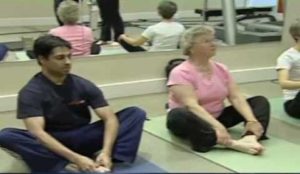Improve Tolerance of Distress and Psychological State with Mindfulness
By John M. de Castro, Ph.D.
“Distress Tolerance skills are used to help us cope and survive during a crisis, and helps us tolerate short term or long term pain (physical or emotional). Tolerating distress includes a mindfulness of breath and mindful awareness of situations and ourselves.” – DBT Self Help
Psychological distress is related to an increase in physiological stress responses. That is, when the individual is anxious, ruminating, or having negative emotions, the physiology including the hormonal system reacts. The increased activity can be measured in heightened stress hormones in the blood and increased heart rate, blood pressure etc. These physiological stress responses on the short-term are adaptive and help to fight off infection, toxins, injury, etc. Unfortunately, psychological distress is often persistent and chronic and resulting in chronic stress which in turn can produce disease.
Many of the symptoms of psychological distress have been shown to be related to a lack of mindfulness. Anxiety is often rooted in a persistent dread of future negative events while rumination is rooted in the past, with persistent replaying of negative past events. Since mindfulness is firmly rooted in the present it is antagonistic toward anything rooted in the past or future. Hence, high levels of mindfulness cannot coexist with anxiety and rumination. In addition, high mindfulness has been shown to be related to high levels of emotion regulation and positive emotions. So, mindfulness would appear to be an antidote to psychological distress.
In today’s Research News article “Dimensions of distress tolerance and the moderating effects on mindfulness-based stress reduction.” (See summary below or view the full text of the study at: https://www.ncbi.nlm.nih.gov/pmc/articles/PMC6130202/ ), Gawrysiak and colleagues recruited participants in an 8-week Mindfulness-Based Stress Reduction (MBSR) program. The program was specifically developed to improve coping with stress and consisted of weekly 2.5-hour group training sessions with home practice and included meditation, body scan, yoga practices, and discussion. They were measured before and after training for distress tolerance, perceived stress, and positive and negative emotions.
They found that following the MBSR program the participants demonstrated significant increases in distress tolerance and vigor and decreases in perceived stress, anger, confusion, depression, fatigue, and tension. In addition, they found that participants who were low in distress tolerance had the greatest decreases in perceived stress after the program while those high in distress tolerance had the least change.
Hence, they found that the MBSR program improved the psychological state in the participants. This is in line with previous research that demonstrated that mindfulness training improves psychological and physiological responses to stress and improves emotions. What this study contributes is the understanding that MBSR improves that participants ability to cope with psychological distress. Importantly, they also found that the participants who benefited the most were the ones who had the least ability to cope with distress to begin with. This suggests that one of the reasons that MBSR training is beneficial is that it improves the individuals ability to deal effectively with tough emotions and situations which, in turn, improves the individuals ability to deal effectively with stress. This, then, improves their emotional state.
So, improve tolerance of distress and psychological state with mindfulness.
“Mindfulness helps you go home to the present. And every time you go there and recognize a condition of happiness that you have, happiness comes.” — Thich Nhat Hanh
CMCS – Center for Mindfulness and Contemplative Studies
This and other Contemplative Studies posts are also available on Google+ https://plus.google.com/106784388191201299496/posts and on Twitter @MindfulResearch
Study Summary
Gawrysiak, M. J., Leong, S. H., Grassetti, S. N., Wai, M., Shorey, R. C., & Baime, M. J. (2016). Dimensions of distress tolerance and the moderating effects on mindfulness-based stress reduction. Anxiety, Stress, and Coping, 29(5), 552–560. http://doi.org/10.1080/10615806.2015.1085513
Abstract
Background and Objectives:
This study examined the relationship between distress tolerance and psychosocial changes among individuals participating in Mindfulness-Based Stress Reduction (MBSR). The objective of the analysis was to discern whether individuals with lower distress tolerance measured before MBSR showed larger reductions in perceived stress following MBSR.
Design and Methods:
Data were collected from a sample of convenience (n = 372) using a quasi-experimental design. Participants completed self-report measures immediately prior to course enrollment and following course completion.
Results:
Perceived stress, distress tolerance, and mood states showed favorable changes from pre- to post-MBSR in the current study. Baseline distress tolerance significantly moderated reductions on perceived stress, supporting the primary hypothesis that individuals with lower baseline distress tolerance evidenced a greater decline in perceived stress following MBSR. For a one-unit increase on the self-reported baseline Distress Tolerance Scale, reported perceived stress scores decreased by 2.5 units (p < .0001).
Conclusions:
The finding that individuals with lower baseline distress tolerance evidenced a greater decline in perceived stress may offer hints about who is most likely to benefit from MBSR and other mindfulness-based treatments. Identifying moderators of treatment outcomes may yield important benefits in matching individuals to treatments that are most likely to work for them.









